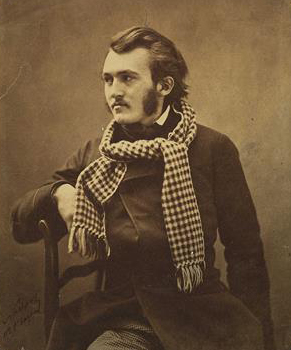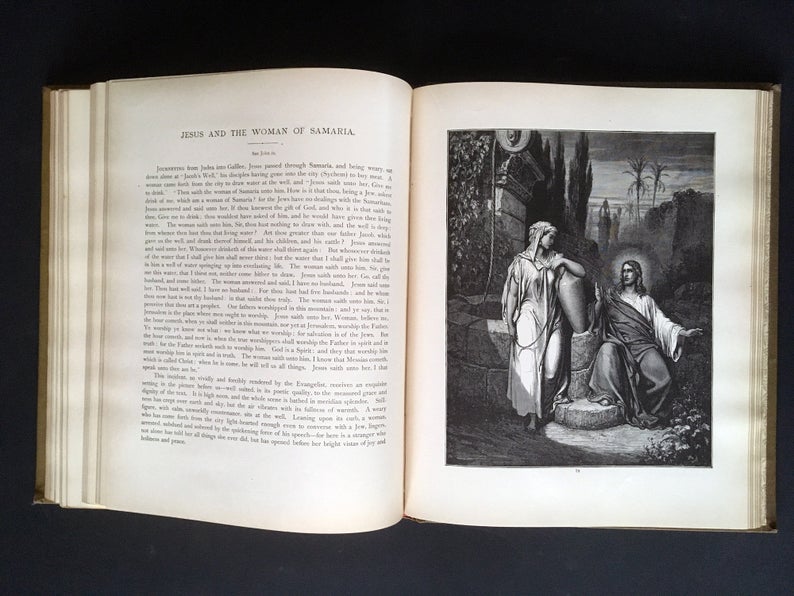There is no question that the web has made it possible for museums to radically extend the reach of their collections. Today, anyone with Internet access, anywhere in the world, can dive into a museum’s collection and explore more objects and artifacts than they could even at the physical museum. And a cursory review of your Google Analytics can show you this global reach, measuring the exact extent to which your collection is accessible to the world. Reach, when it comes to online collections, is easy to measure.
It’s also fairly easy to see and measure the physical reach of your collection. You can see when the galleries are active and full. And admission data can quantify the real world reach. Reach is evident, observable, and measurable.
But what about impact?
What Has More Impact?
Let’s run a thought experiment. Which event has greater impact: one hundred middle school students on a gallery tour, with faces to screen, texting and snapchatting each other – or one graduate student making a vital discovery in their research by accessing an object deep within your online collection? Clearly there is greater measurable reach when we see a hundred students in the museum. But the impact for the graduate student may be much greater. Of course there might be a student or two among one hundred that might put away their phones long enough to have an impactful experience—but how can such an experience be measured? Well, it can’t. These are the hidden impacts that your collection has on individuals. Invisible impacts, but sometimes profound.
Reach is important, but I think impact is what really drives us. And of course, a person has to be reached before they can be impacted. But the number of people impacted will always be a small subset of those we reach. Therefore, from an impact perspective, digital strategies that focus on reach, should also be geared for impact–so that the ratio of those impacted among those reached can grow.
Last month I wrote an Insights article about how the challenges museums face today are the same as those faced since their beginning. Drawing from “Museum Origins: Readings in Early Museum History and Philosophy,” by Hugh H. Genoways, we saw that fulfilling a museum’s mission has always required the ongoing help of generous donors. Reading about the struggles of museums across the centuries can be encouraging as museums contend with the same challenges today. And the struggle to make an impact is likewise nothing new. Resources and efforts have always had to be disproportionately spent on increasing reach. Fredric A. Lucas, Director of the Brooklyn Museum, in an address from 1907 highlighted this tension.
“Nowadays it is definitely recognized that while a museum is an eminently serious proposition it will not be taken too seriously by visitors, that in fact only a small proportion of them seek it with a definite purpose to be instructed, and so a distinct effort is made to arouse the interest of the average visitor. A museum should take itself seriously but none the less should it provide “rational amusement” for the many by whose funds it is largely supported.”
Amusement Strategies
Whenever I read about, or see demos of the latest gadgets or VR experiences at conferences, designed to augment the museum experience, I have to admit to a degree of despair. Shouldn’t standing in front of an ancient Greek bronze helmet provide enough of a sense of awe? Shouldn’t looking at an object that’s been on this planet a few thousand years longer than I have, and will be here long after I’m gone, provide an adequate experience? Do we really have to add sound effects? Just think a bit about where that object has been, or who may have worn it. What battles it was in? When was it found? But it seems that unless there’s a VR overlay young people will likely walk right by with their eyes glued to their phones. There is serious knowledge and amazing experiences to be gained in the presence of history or creativity–but alas, Snapchat beckons.
But it’s always been that way, same today in 2017 as it was in 1907. And so I agree with Director Lucas that museums do need to make efforts to provide “rational amusement” so that the general public can have a fun time hanging out, seeing a cool things, and grabbing a snack. And since we must compete for their attention—both onsite, and online—using augmented reality, gaming, or VR may be necessary to help secure some of their aggressively vied for attention.
Of course, one major struggle museums face today is how exactly to provide this “rational amusement” when technological acceleration presents so many possibilities. Technology is both a help and hindrance in this regard. On the one hand it allows us to share collections world wide twenty four hours a day, seven days a week, three hundred and sixty five days a year. On the other hand technology forces us to compete with texts, posts, selfies and shares for the attention of museum visitors. And it’s not just the distraction of technology, it’s the immersive experiences technology provides. Video games, vast entertainment channels, and augmented reality disincline some from visiting a museum in the first place, but they also desensitize the screen addicted, making it harder for them to appreciate the riches before them when they do come.
Keeping Up With the Joneses
I often ponder whether it’s even realistic for museums try to “keep up with the Joneses” when it comes to utilizing web apps, virtual reality, augmented reality, gamification, and social media aggregation. All these exponentially increasing number of technical opportunities come with hefty price tags.
As Director Lucas exhorted in 1907, such efforts must be made. But since resources are limited, how we use our time, effort, and money should be carefully scrutinized. Therefore we should look for opportunities that not only provide amusement, but may also draw visitors more deeply into appreciating the objects themselves. It’s not just which technologies to adopt, but how they are used.
If we can find technologically innovative ideas that entertain and amuse, and also deepen the impact that the collection has on visitors, whether virtual or in person, then these are well worth investing in.
Our focus, here at Cuberis, is the online expression of the collection. When we’re designing museum websites, we always want to maximize the impact of the collection, even though we know that the majority of visitors head straight to the contact page for hours of operation, or to the cafe menu. We’re always thinking about ways to integrate the collection into and throughout the entire website. The serious visitor will take the time to explore the collection because they come “with a definite purpose to be instructed.” But we want to find ways to keep the collection front and center–whether they are exploring the collection or not. Because among the many that a museum website may reach, there will be the few that the website will impact. And we want to help museums to grow that percentage, and deepen that impact.










